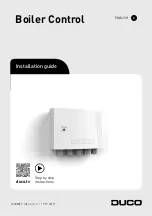
52
3064816_201804
Before commissioning, carry out a leak test on all hydraulic pipework.
If the appliance is not watertight, there is a risk of leaks and resulting
material damage.
Test pressure on the heating water side max. 4 bar
Prior to testing, close the shut-off valves in the heating circuit for the
appliance, as otherwise, the safety valve (accessory) opens at 3 bar.
The appliance has already been leak tested at the factory at 4.5 bar.
Treatment of heating water in accordance with VDI 2035:
Potable water may be used as filling and top-up water if the limits in table 1 are not
exceeded. Otherwise, the water must be treated using a desalinisation process.
If the water quality does not meet the required values, the warranty for components
on the water side becomes void.
The only permissible water treatment process is desalinisation!
Thoroughly flush the system prior to commissioning. In order to keep oxygenation
as low as possible, it is recommended to flush the system using tap water and then
to use this water for the water treatment (position the dirt filter upstream of the ion
exchanger).
Heating water additives such as antifreeze or inhibitors are not
permitted, as they can damage the heating water heat exchanger.
Alkalising additives may be used by a water treatment specialist to
stabilise the pH value.
In order to prevent corrosion damage to the aluminium heating water heat exchanger,
the pH value of the heating water must be between 6.5 and 9.0.
In mixed installations, a pH value of
8.2 to 9.0
must be maintained in
accordance with VDI 2035.
The pH value should be checked again 8-12 weeks after commissioning, as under
certain circumstances, chemical reactions may cause it to change. If it does not fall
within this range after 8-12 weeks, remedial measures must be taken.
Heating water quality requirement relating to the entire heating system
Limits in relation to specific system volume VA
(VA = system volume / max. rated heating output
1)
)
Total hardness conversion: 1 mol/m³ = 5.6 °dH = 10°fH
Total heating output
V
A
≤ 20 l/kW
V
A
> 20 l/kW and < 50 l/kW
V
A
≥ 50 l/kW
Total hardness /
total alkaline earths
Conduc-
tivity
2)
at 25°C
Total hardness /
total alkaline earths
Conduc-
tivity
2)
at 25°C
Total hardness /
total alkaline earths
Conduc-
tivity
2)
at 25°C
[kW]
[°dH]
[mol/m³] C [µS/cm] [°dH]
[mol/m³] C [µS/cm] [°dH]
[mol/m³]
C [µS/cm]
1
≤ 50
≤ 16.8
≤ 3.0
< 800
≤ 11.2
≤ 2
< 800
≤ 0.11
3)
≤ 0.02
< 800
2 50-200
≤ 11.2
≤ 2
< 100
≤ 8.4
≤ 1.5
< 100
≤ 0.11
3)
≤ 0.02
< 100
3 200-600
≤ 8.4
≤ 1.5
≤ 0.11
3)
≤ 0.02
≤ 0.11
3)
≤ 0.02
4
≤ 600 ≤ 0.11
3)
≤ 0.02
≤ 0.11
3)
≤ 0.02
≤ 0.11
3)
≤ 0.02
The total amount of fill and top-up water over the life cycle of the boiler must not exceed three times the nominal volume of the
heating system.
1)
According to VDI 2035, in systems with multiple boilers, use the maximum rated heating output of the smallest heat source
2)
High salinity < 800 µS/cm
Low salinity < 100 µS/cm
3)
< 0,11°dH recommended standard; permissible up to limit of < 1°dH
Table 1
Hydraulics
Please
note
Filling
Please
note
Please
note
Filling
Please
note
Electrical conductivity and water
hardness
25. Filling the heating system/trap
















































